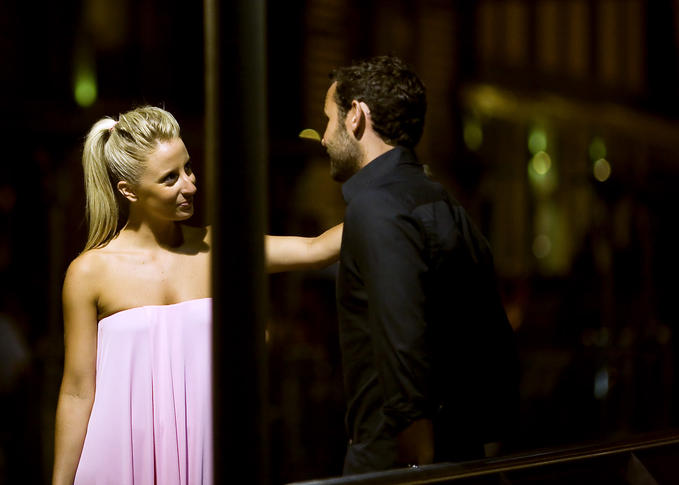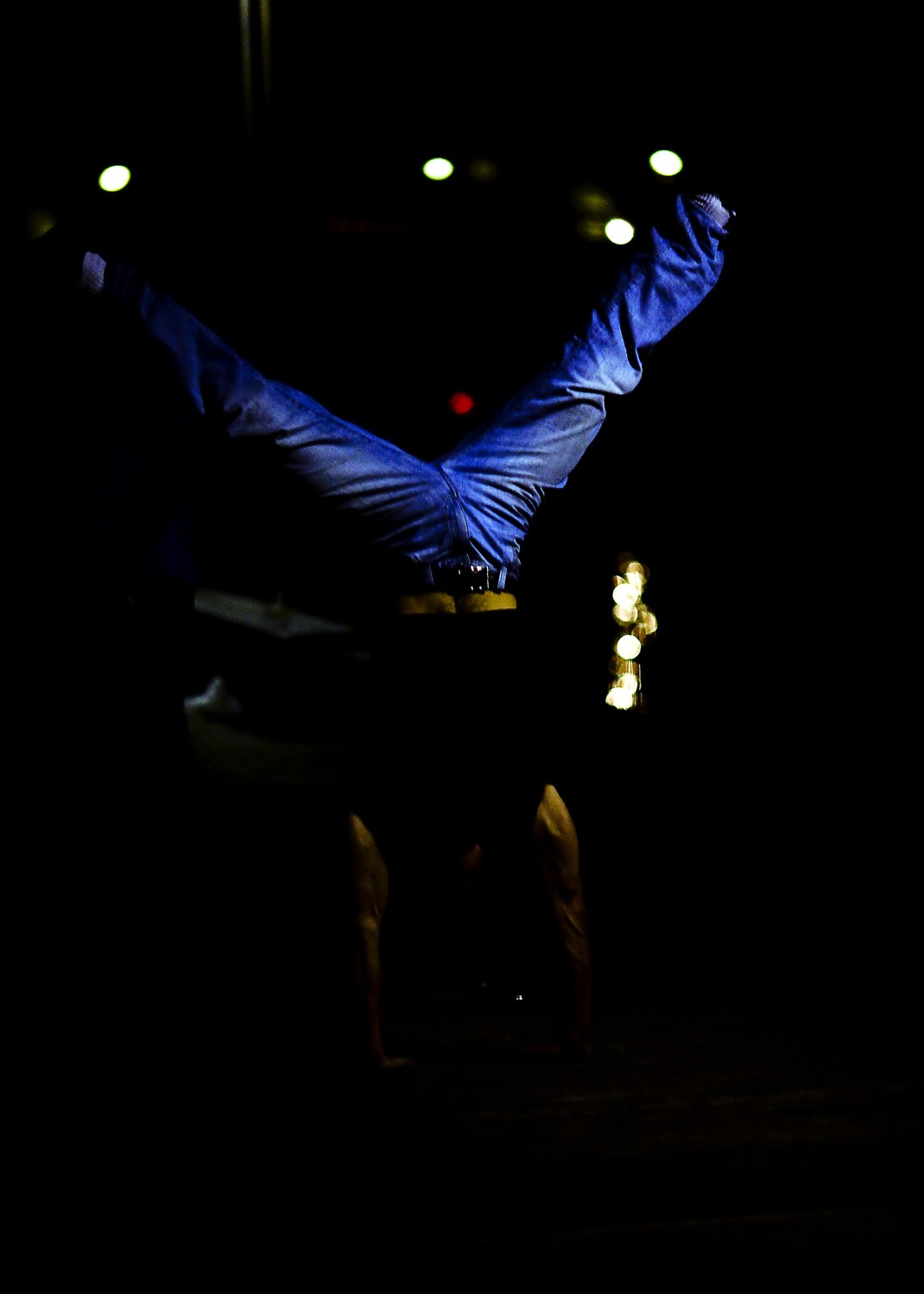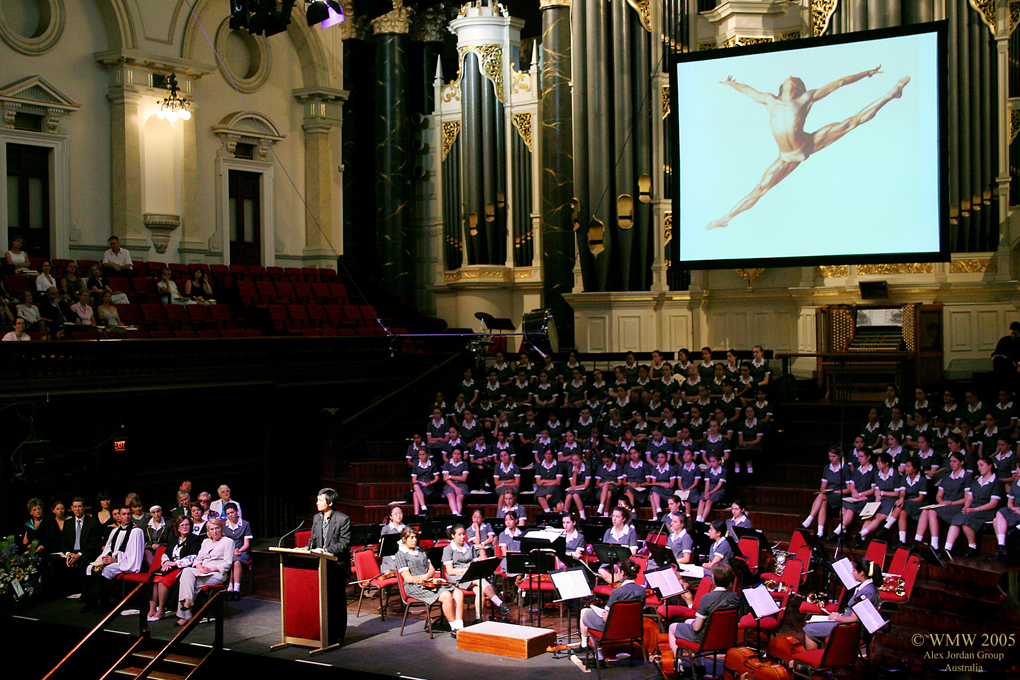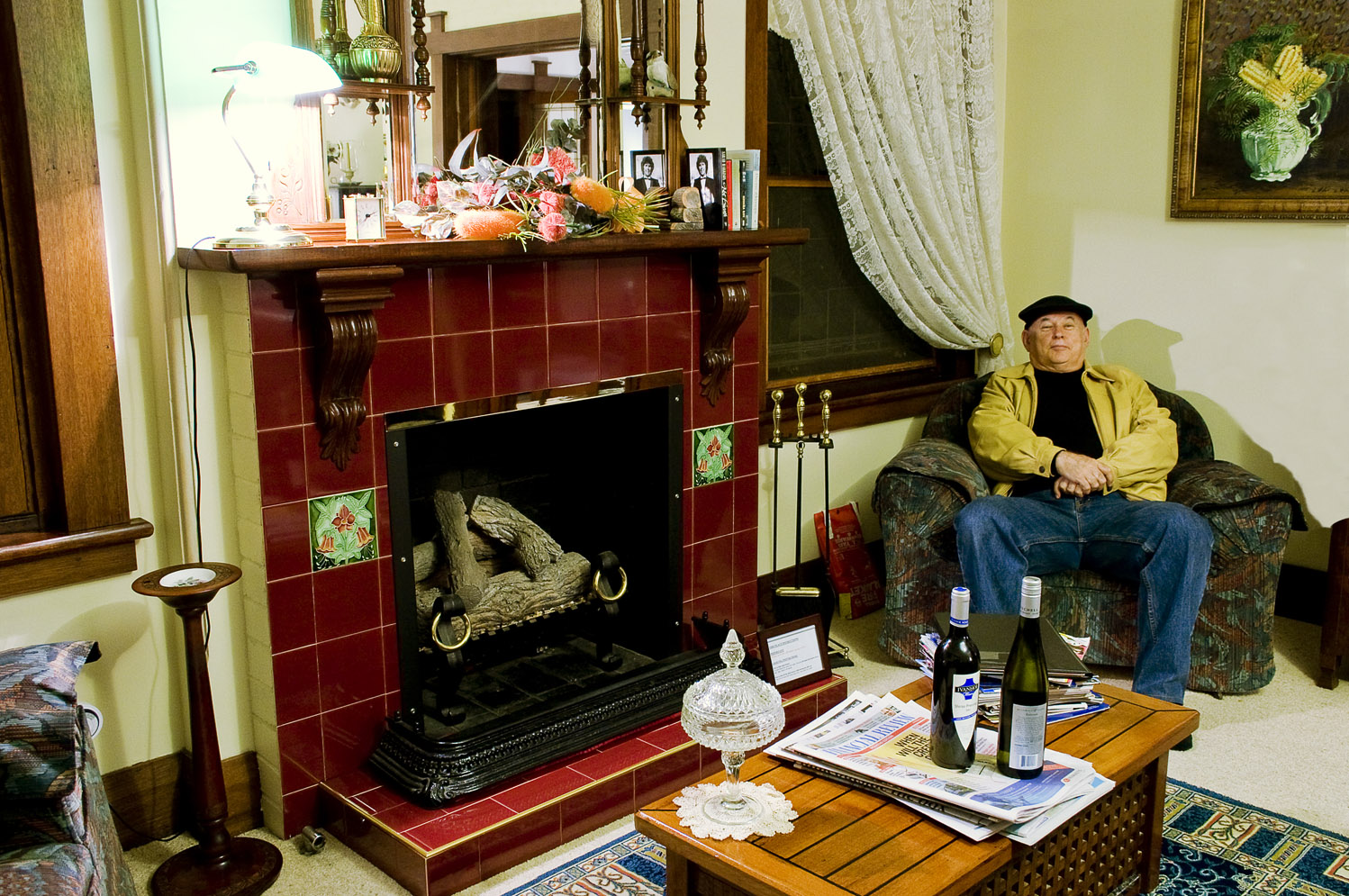Hello all,
I've a longstanding habit of being outside at night and have recently decided to add photography to my usual night activities of walking, exploring or running. I went out a few times with an old P&S and it was really enjoyable, but the images were massively fuzzy and the details were rough, so I'm looking to upgrade. This site has been a great resource, but I have a few questions:
I've gathered that my greatest enemy is noise and that the best way to deal with this is finding a dSLR with low noise at good ISOs. Are there any other major factors I should be looking for in a low-light camera?
Based on the assumption above, I'm tentatively between a used Canon EOS 1000D/Rebel XS and a Sony A290. The reviews I can find for the Canon note that it doesn't have much noise all the way up to ISO 800. The reviews of the A290 note that it is only average in low light, but I can't tell a huge difference in the charts on dpreview.com and it is two years newer. Has the technology improved enough in the past two years that what was good then is average now?
I'm unfortunately looking to keep on a pretty tight budget, with a cap of about 450 for the camera. Any advice at all, from the gear to night photography in general, would be much appreciated.
Many thanks,
Nathan
Results 1 to 15 of 15
Thread: Entry-level low-light equipment
-
30th January 2011, 02:19 AM #1New Member

- Join Date
- Jan 2011
- Location
- Brooklyn, NY
- Posts
- 3
- Real Name
- Nathan Rouse
Entry-level low-light equipment
-
30th January 2011, 06:13 AM #2rob marshall
Re: Entry-level low-light equipment
Nathan
Is it safe being out and about at night in NY? Forgive me for asking, but we get to hear so much about some places in the US that are not safe, especially at night. Having said that, there are quite a few places over here in the UK that are not too safe at night.
For night photography you need a tripod, and you want to shoot on ISO100. Higher ISO ratings just amplify the light readings per pixel and any amplification will start to create noise, especially in low-light conditions, because pixels don't get such a definite reading of the scene. Not sure about those cameras, but generally speaking cameras with the latest processors and a good MP density will create clearer shots. The Sony has a slightly larger sensor, but a lot more pixels (and pixels density) so that may account for the poorer performance in low light. The Sony has a CCD sensor, compared to the 1000D's CMOS - that may possibly account for some differences.
BTW - you can do a side-by-side comparison on DP Review - did you know that? Here...http://www.dpreview.com/reviews/sidebyside.asp
-
30th January 2011, 07:07 AM #3
Re: Entry-level low-light equipment
As rob marshall mentioned, you will need a tripod for low-light landscape photography. There are no 2 ways about it.
I have a Nikon D700 dSLR, which is a full frame camera. It uses the same sensor as the D3 (not to be mistaken with the D3s, which is even better, or D3x). This camera produces less noise than most other cameras. However, I still use a tripod when I'm capturing static objects. ISO 200 produces superior results than a higher ISO like 800. In addition, I usually use an apeture of f/16 or f/11 to increase my depth of field. The low iso used, in addition to the small apeture, means that I have to use the tripod.
A tripod is probably the best investment you can make as far as photography is concerned.
-
30th January 2011, 07:51 AM #4
Re: Entry-level low-light equipment
the pixel density is by no means related to noise. It may look noisy at 100% zoom, but the denser pixels average out. As a case in point, the old nikon D40 6mp is is less noisy at 100% than the much newer and far more advanced D7000 16mp.
and add this to the list:
http://www.dxomark.com/index.php/en/...ompare-sensors
Each camera (1000D & A290) seems to have equal general performance, with the Sony being a better ISO 100 performer.
-
30th January 2011, 08:04 AM #5
Re: Entry-level low-light equipment
As everybody has been saying, a tripod is your best bet. With today's cameras, one cannot take a clean picture of a night setting without a tripod. Perhaps the Nikon D3s is close, but no cigar. Not to mention the rest of the camera market can't even see the end of the tunnel

-
30th January 2011, 01:36 PM #6
-
31st January 2011, 08:15 AM #7
Re: Entry-level low-light equipment
You haven’t supplied enough information to give the correct / specific advice.
The critical element missing to answer the question is what are you photographing?
A very inexpensive camera which can only manage ISO400 might be absolutely fine, if your night time subjects are stationary. Also for this type of night time Photography, a Tripod would be a very reasonable suggestion. For this type of night time Photography you could use a second hand 450D with the kit zoom lens and a good second hand tripod and do this easily (well . . . with a bit of practice):

Laying Pipes
5D 50/1.4
F/7.1 @ 1/8s @ ISO800.
On the other hand – you will need a camera capable of High ISO and also Very Fast Lenses if your subjects in the dark of night are moving (even slowly moving):

The Lamp Post will Not Divide Us
5D 135/2L
F/2 @ 1/100s @ ISO3200
Also even if the subjects are not moving all that quickly and it is REALLY dark a Tripod might not be the answer for you as you might not want the attention a tripod attracts to you, so good hand holding, breathing and shutter release technique, are assets:

Mother and Child
5D 135/2L
F/2 @ 1/25s @ ISO3200
So the question really only can be answered with more information:
If you want to freeze subject reasonable movement (walking pace) in dark night time environs, then you will need a camera capable of around ISO3200 with good noise characteristics and you will need lenses about as fast as F/2. In this case a tripod will not be all that helpful.
If you want to shoot night time static scenery – then a 1000D and a kit lens and a tripod is a good answer.
In regards to NOISE: - your WORST enemy is UNDER-EXPOSURE.
Do not fall for the trap (as many do) of Underexposing with the view of - "bringing it up in post"
WW
-
31st January 2011, 08:28 AM #8

- Join Date
- Dec 2008
- Location
- New Zealand
- Posts
- 17,660
- Real Name
- Have a guess :)
-
31st January 2011, 09:34 AM #9
Re: Entry-level low-light equipment
I'm a Canon user so my knowledge is confined to that brand. The budget of 450USD is a bit tight because I would suggest a 7D due to its high ISO settings. A 24-70mm F/2.8 lens makes it perfect for walking around at low light. Get a regular backpack, a Jansport perhaps, not those ones that shout, "CAMERA INSIDE". Carrying a tripod makes you high profile so I would suggest a small bean bag or 6" x 6" pillow with styropor beads inside. You can rest your camera on top of the bean bag on your car's hood or roof, or even on the street for that low perspective shots. If you need to run away fast, grab your camera and leave the bean bag.
-
31st January 2011, 12:11 PM #10
Re: Entry-level low-light equipment
-
2nd February 2011, 05:15 AM #11New Member

- Join Date
- Jan 2011
- Location
- Brooklyn, NY
- Posts
- 3
- Real Name
- Nathan Rouse
Re: Entry-level low-light equipment
Thanks for the advice everyone!
Most of the goal is going to end up with stationary views and a long depth of field; the Laying Pipes image that you've posted, Bill, is closest to what I have in mind. The other two are gorgeous and something I might aspire to, but unfortunately my current taste is being dictated largely by my budget (so it goes : /). I'm definitely investing in a tripod now but, as has been pointed out, the issue with the attention it might attract is unfortunately there. While New York isn't nearly as dangerous as it was, say, 20 years ago, safety is always an issue in a city and I would like to avoid being obviously stationary. I notice the Laying Pipes shot was taken at 1/8s; would it be possible to do this clean on a cheap kit with just a rough balance, maybe a wall, a bench or a knee?
Cropping and exposure are unfortunately beyond my current scope as a very-very beginner, but I'm under the understanding that both are independent of the equipment being used. Does this mean that my major enemies here are skill- and not money-based? Because that would be incredibly good news; time and patience I have. Money - not so much.
Many thanks!
Nathan
-
2nd February 2011, 08:09 AM #12
Re: Entry-level low-light equipment
Short answer: Yes YOU can pull ⅛s Hand Held with Support (and good technique).

“This Side” #04496
5D + 24/1.4L
F/5 @ ½s @ ISO1600, Hand Held, Manual Exposure, Manual White Balance.
***
Specifically I did NOT use a Tripod for “Laying Pipes”.
Sorry if that was implied – I was actually stating that you could take a photo like that quite easily if you had a tripod – taking the same WITHOUT a Tripod requires a bit more practice.
Technique (no tripod, no Remote Release) for “Laying Pipes” (seen as I was driving home late at night from a gig):
> Brace Camera on a Woollen jumper, wrapped around a wooden railing packing it in.
> Downward pressure with left hand on top of camera.
> Mirror Up.
> Delayed Timer to Expose.
***
A couple of further points on this:
Consider a monopod
The Photographs you describe you want to make might require Tv longer than ⅛s
Tv LONGER than ⅛s HAND HELD is possible (without IS) - (the proof is above, including the hot pixel!) – but it can be tedious to do and not always a 90% keeper rate.
Correct SHUTTER RELEASE TECHNIQUE and CAMERA HOLDING TECHNIQUE and STANCE and SUPPORT and BREATHING and BRACING makes Hand Held more consistantly accurate.
***
Cropping: is simply taking a portion of the image (cropping away the edges) and making it the new image. (“enlarging a smaller portion of the original”).
Exposure: is the correct amount of light (Aperture), for the correct period of time (Shutter Speed), to make the Image “Perfect” for the chosen ISO (Sensitivity).
My reference to NOT UNDERexposing was targeted at knowing HOW to use the LIGHTMETER (in the camera) most efficiently - so the exposure is “correct” for the scene as YOU want to record it.
The Camera’s Lightmeter will do a very good job most of the time, but some might have a little problem at night. Having said that the sophisticated algorithms in modern DSLRs are not all that often tricked – but if you wanted the available light to make a picture something like this:

"Midnight Acrobat"
5D 135F/2L
F/2 @ 1/100s @ ISO400 HH Manual Ex. AWB
I ignored the camera’s light meter altogether, because it was telling me something I did not want to do.
***
Going back to your original question about looking at noise figures and technological advancement and etc . . .
A while ago, I was teaching a class and one of the Students was disgruntled about her equipment and stated that she could not do the exercises because of her gear’s limitations and that it was easy for me to get all the “great low light pictures” because etc etc etc . . . and “YOU (me) HAVE A BETTER CAMERA!”
So we had the next lesson based on me ONLY using a 20D and the Kit Lens (non IS) for a week.
I was allowed a Tripod IF the shutter speed was ½s or longer and I was not allowed Flash or Studio Lights.

Li Cunxin (Mao’s Last Dancer), Sydney 2005
20D Kit Lens @ 33mm
F/5.6 @ 1/40s @ ISO1600 HH Manual Exposure. Manual WB
***

Interior of Queen Victoria Building – Sydney
20D Kit Lens @ 18mm
F/3.5 (wide open) @ 1/50s @ ISO800 HH Manual Exposure AWB
***

“Portrait by Room Light”
20D Kit Lens @ 21mm
F/5.6 @ ½s @ ISO800 Tripod, Manual Release, Manual Exposure, Manual WB
***
I understand you are limited by Money.
I am not really keen of suggesting you get this or that particular camera or whether to buy new or second hand.
I use Canon DSLRs and I know them well.
What I will advise is buy what you can afford, the best you can afford in a camera body that allows (by the tech specs) you to use ISO1600.
I think you would be best to buy a standard kit zoom lens – yes it will be very slow (aperture) and taking photos at night will be challenging for you, but not impossible. And as you get more money you can expand your lens collection.
Remember that most kit lenses now have IS (or VR etc) - think about that element of your "Night Photography".
(pay no attention to me, that I generally do NOT use a kit lens with IS, even though I have one, for these "Night Photos" - I just like pushing the limits without IS, it is a test of skills for me and I can use them for examples in the classroom - when I shoot for money, that is a differnt matter)
My belief is, if you get the bug, you will want to use the camera for many more things than taking these night photos - so a decent camera body and a Kit Zoom lens will allow you to investigate the magnificent vistas of fun which lay ahead, so I don't think it is all that wise focussing on "Night Photography" as your sole buying criterion.
WWLast edited by Dave Humphries; 2nd February 2011 at 10:30 PM. Reason: explained why my samples were not with kit lens and IS
-
2nd February 2011, 09:28 AM #13
Re: Entry-level low-light equipment
Time for you to read this link:
The best photography gear buying general advice.
-
2nd February 2011, 01:04 PM #14

- Join Date
- Nov 2009
- Location
- Provence, France
- Posts
- 990
- Real Name
- Remco
Re: Entry-level low-light equipment
Just a few quick remarks:
As said, noise is not going to be your biggest problem, as long as you avoid underexposure: for the under-exposed images you'll increase luminosity afterwards, and the noise with it, and much more than when you had increased the ISO rating (as increasing the ISO increases the gain before digitisation, limiting the damage)
For long exposures, you're probably better off investing in a good tripod than in a faster lens (which gains you 2-3 stops max, eq. to 2-4s exposure...). Even a monopod is a great help.
One point to keep in mind perhaps: Sony is a small brand in cameras, which means that the range of accessories and lenses is more limited than for Canon or Nikon, esp. from 3rd party manufacturers (Tamron, Sigma, etc). Also, rental possibilities are very limited or non-existant (for special occasions which don't justify buying e.g. a fast lens).
Remco
P.S. We can explain why higher ISO ratings have less noise than under-exposed lower ISO cranked up in post production, bit that's a bit long for here. There was a discussion in another thread about this, but I can't find it . But see here for some high-ISO exemples, especially some of the linked full-size images.
. But see here for some high-ISO exemples, especially some of the linked full-size images.
-
2nd February 2011, 05:20 PM #15
Re: Entry-level low-light equipment
IMO hand shooting in low light concerns several parameters. I am not going to consider the use of flash, which in many cases is a viable alternative to shooting available light.
My general comments...
1. A camera body able to shoot at relatively high ISO levels without a tremendous amount of noise. Although noise is not the most critical factor in low light photography; it is nice to start with the best image possible before post processing and noise reduction begins.
2. A lens with a relatively large aperture. This is however a two edged sword. Although a wide aperture will allow the photographer to shoot with faster shutter speeds and/or lower ISO; the DOF at these wide apertures is razor thin and often compromises the image.
3. A lens with IS capability. Although IS doesn't stop subject motion, it helps against camera shake and can allow a significantly lower shutter speed to be used before camera shake deteriorates the image.
4. A camera, but especially a lens that allows auto focus in dim conditions. One of the favorite Canonite lenses, the Canon "Nifty-Thrifty" has pretty poor A/F capability in low light. The photographer can manually focus, but IMO, most DSLR viewfinders are not optimized for manual focus and a set of old eyes like mine, might have significant manual focus problems.
5. Use of a camera support... Although a tripod is great for cityscapes, etc. it is not always a convenient way to shoot in low light. A monopod allows significantly more mobility, but that mobility is not quite enough to cover faster moving action.
6. Proper holding and shutter release technique can make a great difference in the quality of low light imagery. This includes supporting the camera against any solid object.
Comments if cost were not the factor and I wanted (and could pay for) the best quality available light images. This is going a bit afar from the original post...
I was just thinking, as I watch the demonstrations in Egypt, just how I would shoot those demonstrations during the day and the night. I would certainly want a camera which could use a high ISO and I would want a lens that was a relative wide-angle zoom if I were in the crowd and a longer zoom lens if I were shooting from some vantage point atop a building.
Sure I could use primes which have wider apertures but, I think that the versatility of a zoom would counterbalance the extra stop or two of a prime. Especially since shooting at f/1.4 or even f/1.8 provides DOF that is difficult with which to work.
If I were shooting full frame or 1.3x crop; I really think that I would want a couple of 1D (series) cameras along with the 16-35mm f/2.8L, 24-70mm f/2.8L and the 70-200mm f/2.8L IS Mk-II lenses and a 50mm f/1.4 Sigma when a very wide aperture was critical.
If I were shooting 1.6x gear, I would select a pair of 7D cameras along with the 11-16mm f/2.8 Tokina, 17-55mm f/2.8 IS and 70-200mm f/2.8L IS Mk-II lenses. I would include a 30mm f/1.4 Sigma in my kit just in case!
Whatever format I shot with, I would probably elect to carry a 1.4x TC to give my 70-200L lens a longer focal length when needed.
I always carried a hand towel along with some dry tee shirt material (in a waterproof container). The towel had multiple uses from protection to drying myself and my equipment to being used folder as a camera rest The tee-shirt material was great for cleaning lenses.
I would also have a 550EX and a 430EX in case I absolutely needed flash. Flash fill in the bright Egyptian daytime would certainly help and there could very well be times when flash would be the only possibility at night...Last edited by rpcrowe; 2nd February 2011 at 05:55 PM.

 Helpful Posts:
Helpful Posts: 
 Reply With Quote
Reply With Quote


